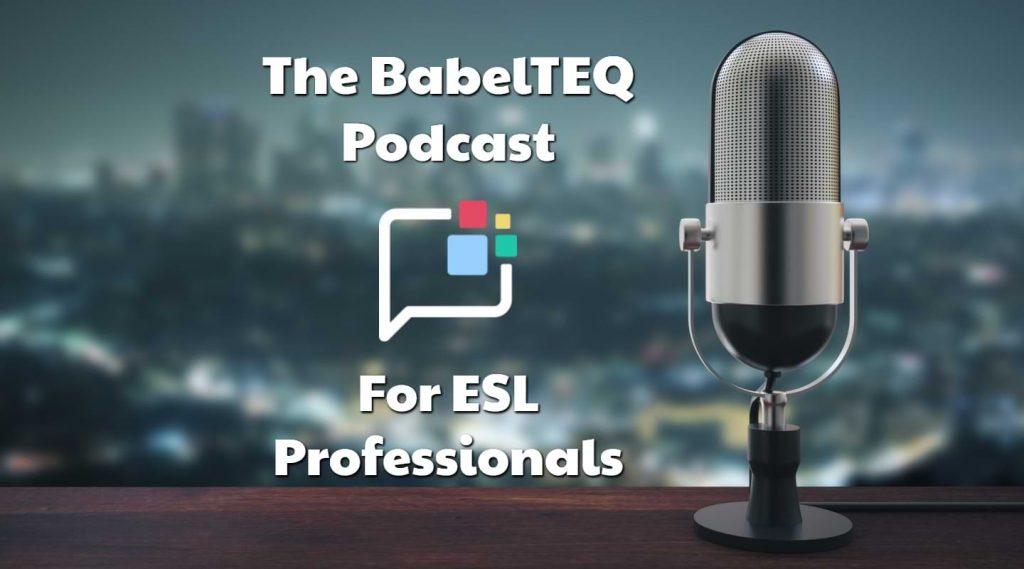Wouldn’t it be great if you could offer language coaching to clients in every time zone of the planet (without turning into a sleep deprived zombie!)
Well there is a way to do that. It’s an option that an increasing number of language professionals are adding to their service offerings. The concept is called asynchronous coaching.
Table of Contents
What do we mean by asynchronous coaching?
Asynchronous learning means that a student completes a course or program with the help of an instructor but that assistance is NOT conducted in real time. The student will submit the curriculum work, either as written assignment or recorded audio or video files. The instructor then reviews it and offers feedback, also via written or recorded means.
How could it benefit students?
Some students might be looking for alternatives to real time sessions. For example if they have unpredictable schedules and commitments (child rearing or care giving) they might be uncomfortable with committing to appointments that can’t be changed at the last minute. Asynchronous coaching give such learners complete autonomy to learn at their own pace.
How could it benefit instructors?
One of the common complaints of online instructors is that their students are potentially distributed across the globe in a variety of time zones. Therefore it becomes difficult to schedule sessions that are mutually convenient. Even in 2022 the “tyranny of distance” is still real.
With asynchronous training, instructors can receive the submitted work from their students, review it and give feedback all on a convenient personal schedule.
Asynchronous coaching could be a useful “premium add-on” to your normal offer of real-time classes. It’s always a good idea to explore additional revenue opportunities with your existing client base.
How is it different to self-study?
Unlike self-study via books and videos, the student is still getting personal feedback from an instructor.
Most self-study programs have an infamously high drop out rate. A lot of people find it hard to stay committed to a program of training without the external accountability, motivation and support that a professional coach provides.

What do you need to deliver asynchronous coaching?
a) A sales page to explain your service
b) A sign up form.
b) A platform for receiving submitted lesson work from students AND offering feedback on that work.
c) A method for student’s to pay you.
You can create and configure a sign up form on BabelTEQ. Just go to the “Forms” section on your dashboard. Reach out for support if you need it.
You’ll probably want to include the following fields in your form:
i) The customer’s full name
ii) Best contact email address
iii) Messaging platform username (if required)
iv) Total price
v) Checkbox to indicate acceptance of Terms and Conditions
Choosing a messaging platform
Email is a useful and cost efficient medium for online marketing and routine business notifications. However, it also has some drawbacks.
One of these is that it’s difficult to be sure that the other person has opened your message (or even received it). Messaging apps, by comparison have near perfect deliverability and will often give us a confirmation when the message was read.
Archiving and organizing email threads can also become a problem. It’s sometimes difficult to find emails if they are buried deep in our inbox history. Direct message threads, by comparison, tend to be better organized and more accessible.
For those reasons alone, using a messaging app is probably a better option, than relying on email systems.
If the bulk of your target audience is already using a particular messaging tool that accepts voice messages, document attachments and maybe even video recordings, it might make sense to suggest using that.
For example, WeChat is very popular with Chinese users, so it might be a good idea to embed your WeChat QR-Code on your website sales page OR payment confirmation page so they can connect with you in a familiar way.
Similarly, WhatsApp and Facebook Messenger are very popular communication tools. You’ll need to decide what messaging app works best for your clients and your business.
Teacherpreneur Marketing
ACADEMY
FACEBOOK GROUP
Using Voxer for asynchronous coaching
A simple to use, yet versatile app that might suit many instructors is Voxer. The free version allows users to send voice messages, photos, GIFs and short video files. It’s possible to connect the app with Dropbox for sending other types of media like text documents. Voxer also has a desktop version.

As an example, you could give your students the assignment of recording a five minute voice message about what they did at work last week, then listen to it and record your own feedback. Voxer accepts audio messages up to 15 minutes in length or video messages of up to 60 seconds.
The app can be downloaded from Google Play or the Apple App Store.
The PRO version (about $US 3.50 / mth) has some additional features that might be especially useful.
i) Voice to text transcription (first 30 seconds only)
ii) Unlimited message storage (free version only stores 30 days)
iii) Group chat moderation (remove messages or users)
iv) Recall Messages (delete messages sent by mistake)
v) Broadcast Chat (one-way only communication to others)
vi) “Extreme notifications” (louder alerts for important messages)
vii) Download audio messages to your desktop
Even the free version has Group Chat or Private Chat modes, either of which might be useful depending on your business model.
For example, you could use a free Group Chat forum as a lead magnet for connecting with new potential students and then move them into Private Chat threads when they have paid for your service.
It seems like its even possible to have a “Clubhouse” style group audio room.
According to their support page, the iPhone version of the App is available in Spanish, Portuguese, French, German, Italian, Arabic, Japanese, Korean, Chinese (Simplified), Chinese (Traditional), Russian, Swedish, Turkish, Thai, Indonesian, and Hebrew.
The Android version has a reduced number of languages.
Watch the following video which gives a good introduction to the Voxer Pro application.
Criticisms
Some people have mentioned Voxer as having poor audio quality. When using my phone’s inbuilt speaker the playback certainly had a “walkie-talkie” quality to it that isn’t great for language coaching.
However, when I switch to “headphone” mode with my AirPods I couldn’t really complain. The quality seems totally acceptable.
By default, in order to record a message you need to “tap and hold” the record button on the screen. I think this is a strange default setting but you can easily switch to “tap to record” via the app settings.
Voxer has the ability to show your current location on Google Maps or Apple Maps to the recipient. By default, the location setting defaults to whatever the system settings are on your device. But to be on the safe side, you may want to educate your users that they should disable the location feature via the menu / settings / My Account Details / Location.
Despite some minor complaints, I suggest you give Voxer a try as your “Go-To” platform for asynchronous lesson communication.
Conclusion
Asynchronous lessons are a viable alternative to real time classes for many students. They could be a convenient option for language coaches who want to help students who have highly unpredictable schedules. It’s also a potentially good way for teachers to manage their own schedules, and not be tied to unsociable lesson times in order to provide coaching services.
The author of this post lives in Japan with his wife and family. He has taught English part-time (online and off) for more than a decade. He is passionate about WordPress consulting, online marketing and using the power of the internet to help people achieve their dreams.
He thinks that until you’ve tried sashimi tuna with wasabi, soy sauce, hot sake and a cold beer chaser, you just haven’t lived.

